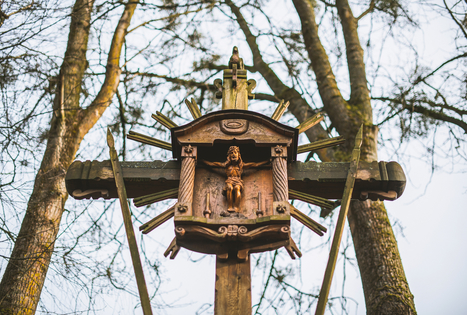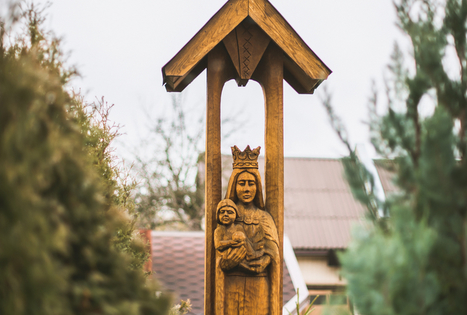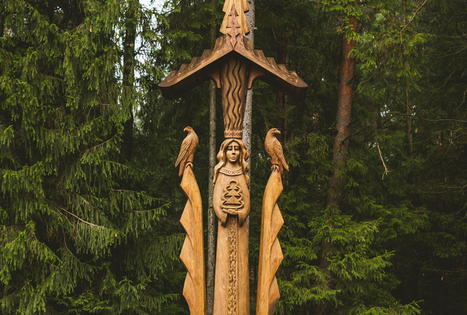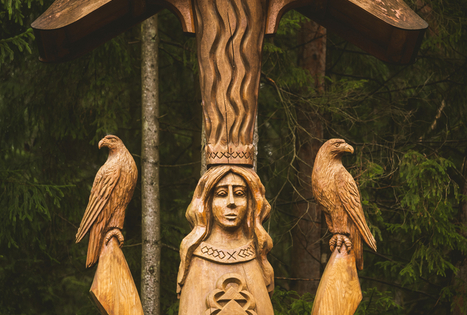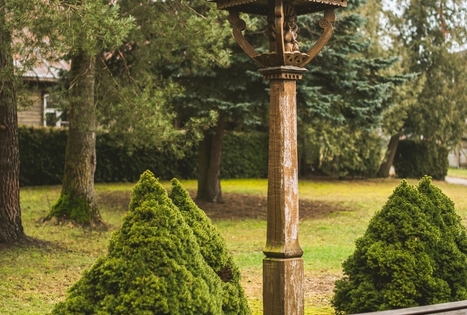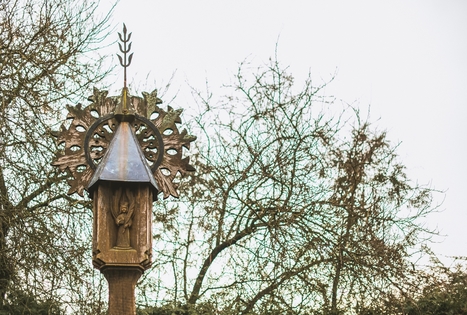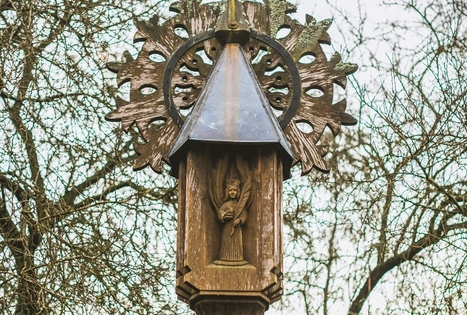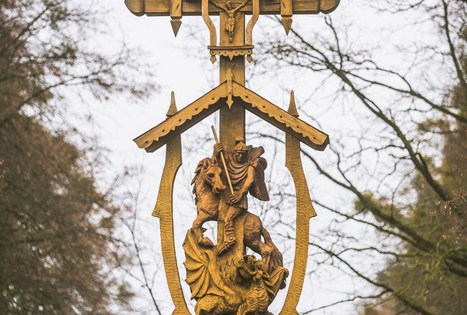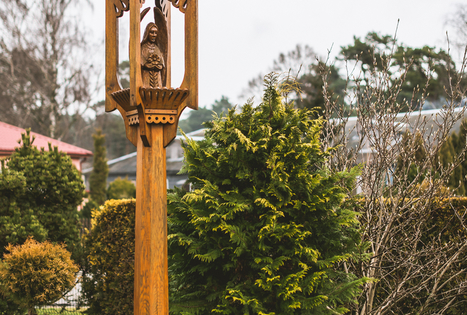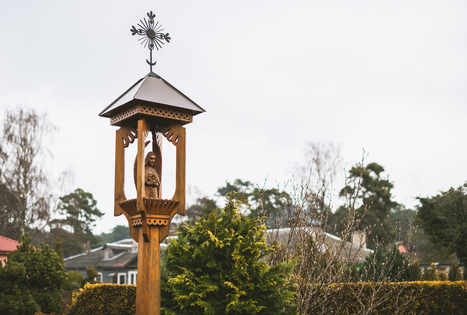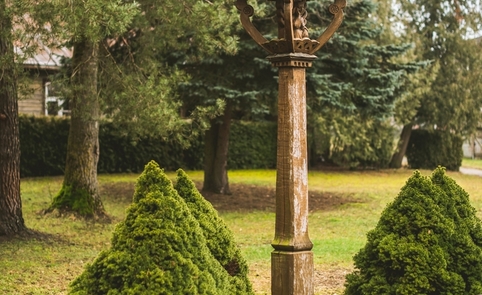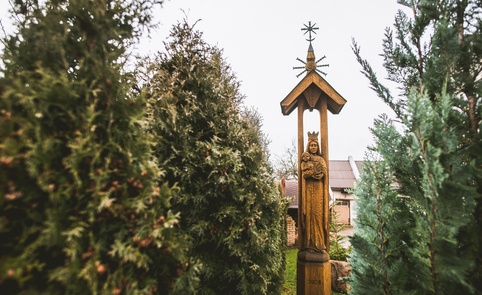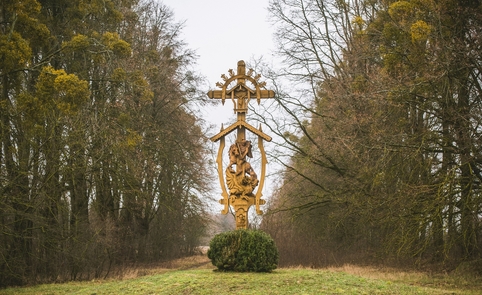Crosses and shrines with various sculptures have been an integral element of the Lithuanian landscape since days of old. In the 19th century, they were in villages and almost in every homestead; they were on roadsides and in cemeteries, churchyards and even fields and forests.
Inscribed on the Representative List of the Intangible Cultural Heritage of Humanity
Since the 15th century, Lithuanians have built crosses to honour the dead while also paying tribute to the spirits, hoping for their grace, as a token of gratitude, or in search of protection and spiritual peace. These monuments are an expression of respect for religion and nature.
Lithuanian cross-crafting and cross symbolism was proclaimed by UNESCO as a Masterpiece of the Oral and Intangible Heritage of Humanity in 2001. It is a masterpiece unlike anything in the world, which not only bears witness to a living tradition, but is also distinguished by a unique cultural expression.
In late 2008, this tradition was inscribed on the Representative List of the Intangible Cultural Heritage of Humanity, which aims to raise awareness of intangible cultural heritage and highlight its importance, and to promote intercultural dialogue and respect for cultural diversity.
A Folk Culture Phenomenon
Cross-crafting is an art tradition passed down from generation to generation. The vast number and wide variety of crosses have made it possible to define Lithuania’s ethnographic borders.
Traditional Lithuanian crosses are unique structures with elements of architecture, sculpture, blacksmithing and even primitive painting.
Lithuanian cross-crafting is a syncretic (the amalgamation or merging of elements of different religions) manifestation of Lithuanian folk culture. In its conception lies the entire history of the traditional monument: the idea, selecting the site and the artisan, the creative process, erecting, consecrating and visiting the cross, and, finally – burning the dilapidated cross and replacing it with a new one.
Lithuania: The Land of Crosses
The tradition of building crosses in Lithuania came with the expansion of Christianity. However, the history of cross-making is also linked to various prohibitions. After the uprising in 1863, erecting and repairing crosses in unholy places – i.e., cemeteries or churchyards – was prohibited by order of the tsar. And the Soviet occupation nearly destroyed the evolution of cross-crafting – not only it was forbidden to build new crosses, but the majority of the ones that had already been erected were destroyed as well.
Yet even during the occupation, cross-crafting survived in secret, and these monuments became a symbol of national identity and resistance. During the restoration of independence, some of the old crosses were restored, and new ones were erected in memory of the exiles and the partisans. In cemeteries, wooden memorials are increasingly being replaced by headstones. Folk monument ensembles are still being developed, with themes ranging from Christian to pagan or secular.
The world-renowned Hill of Crosses (Šiauliai district) is also known for its abundance of crosses. Pilgrims, people with prayers and requests, artists and handy craftsmen have erected crosses here since the 19th century, and are still doing so to this day. The unique Hill of Crosses, which was destroyed three times during the harshest of Soviet years but rebuilt each time, is now reminiscent of the Wailing Wall in Jerusalem in terms of its aura.
The Distinct Nature of Crosses from Different Ethnographic Regions
The wooden folk monuments from each Lithuanian ethnographic region have their own distinct nature. For example, only in Dzūkija will you find crosses with a silhouette featuring an upside-down triangle formed by intersecting the horizontal with a spear and a long-handled axe — the instruments of Christ’s torture. In Aukštaitija, the structure of the cross is adorned by an abundance of floral and geometric carving – primarily openwork – with small sculptures nestled in the ornamentation. A distinctive feature of Aukštaitija is the stogastulpis (chapel post), which is a lavishly decorated pole with three – or sometimes even four – roofs. Variations of the old single-roof chapel post can also be found in other regions. In Sudovia, the evolution of cross-crafting was slightly different than in the rest of Lithuania. The structure of the cross décor in this region is characterised by floral motifs and distinctively high pedestals. Samogitian crosses vary in shape and size, but tall, massive structures with modest décor are more popular.
To preserved and Passed On to Future Generations
When it comes to preserving cross monuments, it is usually the old crosses, shrines and wayside shrines which have survived to this day that people have in mind. They need to be protected not only from the elements, but also from theft. They are protected from the weather through constant supervision, i.e. repainting and restoring them, and building exact copies so that they can be erected at the original location while the originals are protected by moving them to an indoor museum.
The Convention for the Safeguarding of the Intangible Cultural Heritage obliges the Member States to encourage communities to protect intangible cultural heritage and pass it on to future generations.


